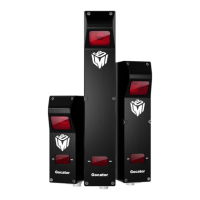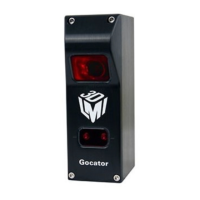Gocator Line Profile Sensors: User Manual
Safety and Maintenance • 20
Customers are advised to obtain the information booklet Regulations for the Administration and
Enforcement of the Radiation Control for Health and Safety Act of 1968: HHS Publication FDA 88-8035.
This publication, containing the full details of laser safety requirements, can be obtained directly from
the FDA, or downloaded from their web site at https://www.fda.gov/Radiation-
EmittingProducts/ElectronicProductRadiationControlProgram/default.htm.
Electrical Safety
Failure to follow the guidelines described in this section may result in electrical shock or equipment
damage.
Sensors should be connected to earth ground
All sensors should be connected to earth ground through their housing. All sensors should be mounted
on an earth grounded frame using electrically conductive hardware to ensure the housing of the sensor
is connected to earth ground. Use a multi-meter to check the continuity between the sensor connector
and earth ground to ensure a proper connection.
Minimize voltage potential between system ground and sensor ground
Care should be taken to minimize the voltage potential between system ground (ground reference for
I/O signals) and sensor ground. This voltage potential can be determined by measuring the voltage
between Analog_out- and system ground. The maximum permissible voltage potential is 12 V but should
be kept below 10 V to avoid damage to the serial and encoder connections.
For a description of the connector pins, see Gocator I/O Connector on page 768.
Use a suitable power supply
The +24 to +48 VDC power supply used with Gocator sensors should be an isolated supply with inrush
current protection or be able to handle a high capacitive load.
Use care when handling powered devices
Wires connecting to the sensor should not be handled while the sensor is powered. Doing so may cause
electrical shock to the user or damage to the equipment.
Heat Warning
If a sensor is not adequately heat-sunk, the housing may get hot enough to cause injury.
Sensors should be properly heat-sunk
To avoid injury and to ensure that a sensor functions properly, mount the sensor to a thermally
conductive material for good heat-sinking.
Handling, Cleaning, and Maintenance
Dirty or damaged sensor windows (emitter or camera) can affect accuracy. Use caution when
handling the sensor or cleaning the sensor's windows.
